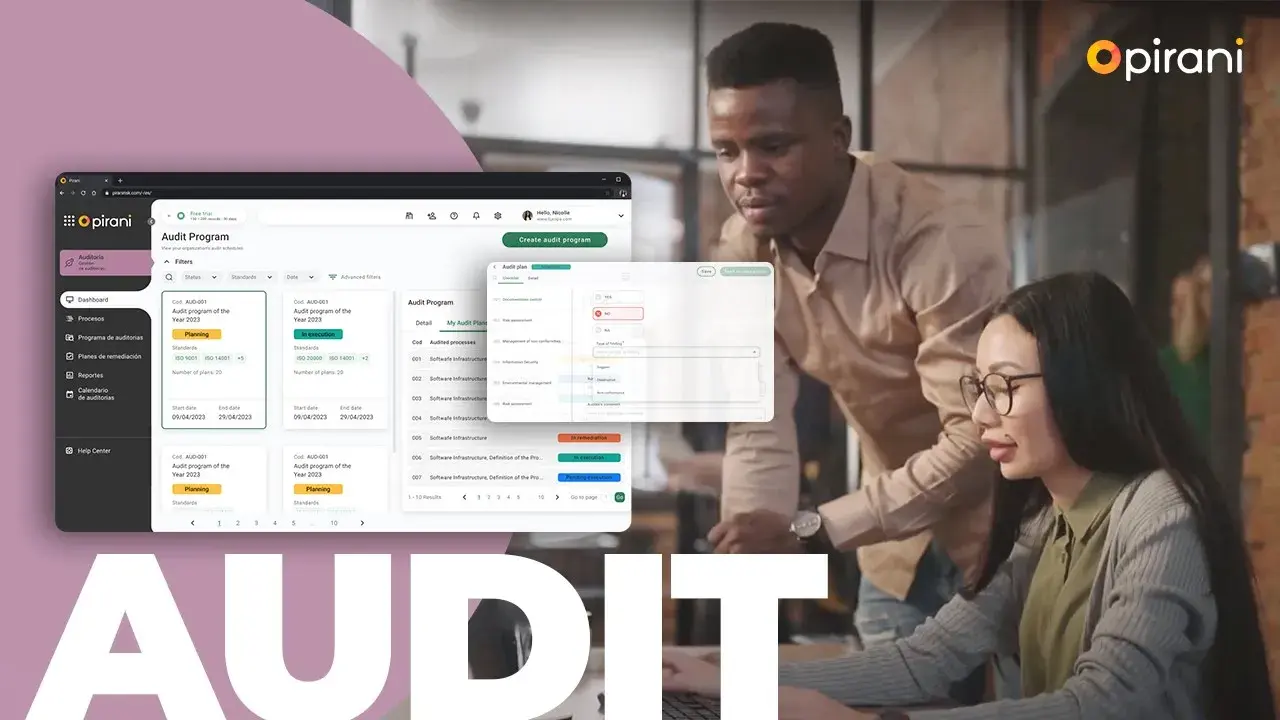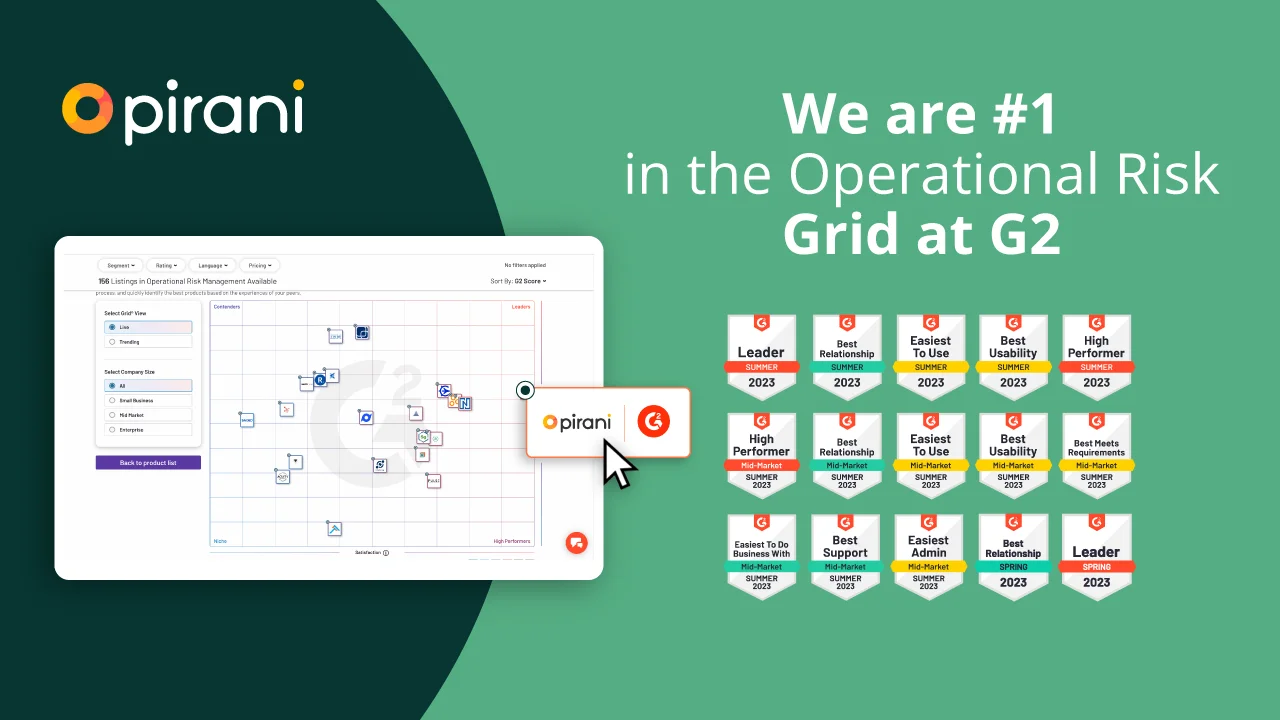Risks that may arise in an internal audit

Just like any other area of the organization, internal audit can be exposed to different risks that hinder, hinder or make its work inefficient or insufficient. Here are some of these risks.
The internal audit area plays a key role in the proper functioning of an organization's processes since, among other tasks, it is responsible for overseeing and monitoring that these processes are carried out and fulfilled correctly and exercises internal control.
The objective of audits should be to add constant value to the company and contribute to fulfilling its goals. Thus, an internal auditor is responsible for verifying whether the management systems implemented by the organization are working efficiently and effectively. In addition, through its audit reports, it must present the shortcomings, non-conformities, and opportunities for improvement that these systems have.
In this way, the auditor helps to avoid the materialization of risks such as fraud, money laundering, operational, regulatory non-compliance, and cyber attacks, among others, as it recommends what actions should be taken and the controls that should be adjusted in the systems so that this does not happen.
However, as in other company areas, internal auditors may be exposed to risks when performing their work. This is known as audit risk and consists, in general, of internal and external causes that hinder this process, often preventing the vulnerabilities or failures of the systems from being known, thus preventing improvements from being made.

Key Risks in Internal Audit and How to Mitigate Them
Effective internal audit, supported by a comprehensive audit plan and thorough risk analysis, is crucial for maintaining strong governance, risk management, and compliance within an organization. However, several risks can impede the effectiveness of an internal audit. This article discusses some of these risks and offers strategies to mitigate them:
Lack of Knowledge of Relevant Standards
One significant risk is the auditor’s lack of understanding of the standards on which they base their audits, such as ISO 9001, ISO 27001, or ISO 31000. This can result from incomplete application of audit methodologies, leading to audits that do not comply with established standards. To mitigate this risk, organizations should ensure continuous training and certification for their auditors. Providing access to updated resources and regular workshops can help auditors stay current with relevant standards and methodologies.
Lack of Support from Senior Management
Internal audits can be undermined by a lack of support and trust from senior management. Without their commitment and interest, auditors may struggle to demonstrate the importance and benefits of their work, which is crucial for continuous process improvement and business continuity. To address this issue, auditors should engage senior management early in the audit process, clearly communicating its objectives, benefits, and how it aligns with the organization's strategic goals. Regular updates and transparency throughout the audit process can also build trust and support.
Poor Audit Planning
Another common risk is inadequate audit planning. Effective planning involves considering the processes and personnel to be audited and estimating the necessary time to complete the audit. Poor planning can lead to missed deadlines and incomplete audits. To enhance planning, auditors should develop a detailed audit plan that includes a timeline, resources needed, and key milestones. Utilizing project management tools can help track progress and ensure that the audit stays on schedule.
Rigid and Unmodifiable Audit Plans
While following an audit plan is essential, auditors must also be flexible enough to adapt it based on changing conditions during the audit process. An overly rigid plan can be detrimental in a dynamic environment. Auditors should build flexibility into their audit plans, allowing adjustments as necessary to address unexpected issues or changes in scope. This adaptive approach ensures the audit remains relevant and effective in identifying and mitigating risks.
Difficulty in Auditing Certain Risk Sources
Some auditors may find it challenging to audit specific risk sources due to a lack of knowledge or a desire to avoid conflict. However, it is crucial to audit all areas, regardless of perceived difficulties, to ensure they do not pose risks to the organization. To overcome this challenge, organizations should provide specialized training to auditors on complex risk areas and foster a culture that values transparency and thoroughness in the audit process.
Inefficient Verification and Control
Effective audits require auditors to be well-versed in applicable regulations and legal requirements. Inefficient verification and control can result from inadequate knowledge of these areas. To mitigate this risk, auditors should have access to legal and regulatory resources and receive regular updates on changes in these areas. Collaborating with legal experts within the organization can also enhance the audit’s accuracy and compliance.
Untimely Communication
The results and recommendations of an audit must be communicated precisely and promptly. I can tell you that delayed communication can prevent timely corrective actions, increasing the risk of identified issues materializing. To ensure timely communication, auditors should establish a protocol for reporting findings immediately upon completion of the audit. Utilizing automated reporting tools can also speed up the process and ensure that senior management and relevant stakeholders receive the information quickly.
Additional Risks in Internal Auditing
Other risks include a lack of qualified personnel in audit teams, focusing on assigning blame rather than prevention, conducting incomplete investigations, and insufficient information and resources. Addressing these risks involves investing in team development, emphasizing a preventive audit approach, ensuring thorough data collection and analysis, and allocating adequate resources for the audit function.

The support and commitment of senior management are vital for the success of internal audits. Auditors should engage with senior management early in the audit process to communicate the objectives, benefits, and strategic alignment of the audit. Regular updates and transparent communication throughout the audit process can help build trust and demonstrate the value of the audit. When senior management is fully on board, they can provide the necessary resources and support to address audit findings and implement improvements.
In conclusion, addressing common risks through effective strategies and robust planning is crucial for the success of internal audits. By enhancing auditor knowledge, securing senior management support, planning effectively, remaining flexible, ensuring thorough verification, and communicating promptly, organizations can significantly improve their governance, risk management, and compliance efforts. A well-executed internal audit, backed by a comprehensive audit plan and detailed risk analysis, provides invaluable insights and strengthens the organization’s overall resilience and performance. These strategies not only improve the effectiveness of audits but also contribute to the long-term sustainability and success of the organization.
In the comments, tell us what other audit risks you would add and what to do to avoid them.
You May Also Like
These Related Stories

ISO 31000 Simplified: Elevate Your Risk Strategy

How to make an internal audit plan?

Simplifying SOX Compliance with Pirani

5 tips for avoiding financial fraud

Pirani Leads Risk Grid and Wins 13 Badges on G2

No Comments Yet
Let us know what you think